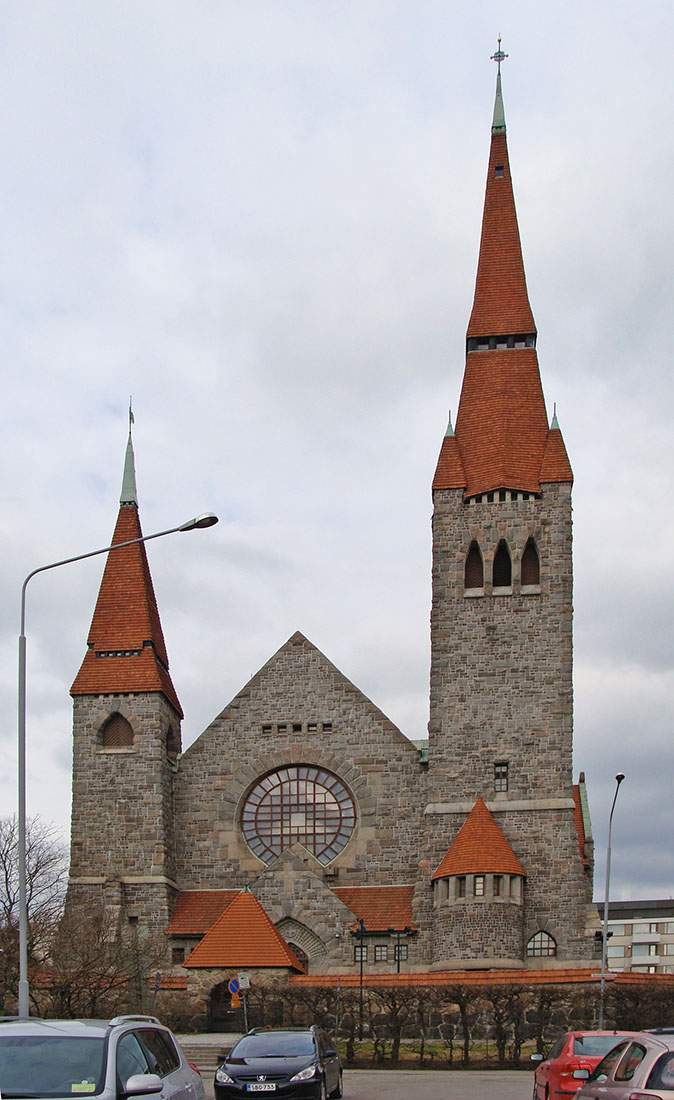 |
 |
 |
 |


Tampere Cathedral
Tuomiokirkonkatu, Tampere
1907
The Tampere Cathedral is a Lutheran church in Finland, designed in the National Romantic style by the well known Finnish architect Lars Sonck. Today the Church, which was built between 1902 and 1907 is the seat of the Diocese of Tampere. The Tampere Cathedral was built as St John's Church, and is considered to be the masterpiece by Lars Sonck. With its rough granite facade, the asymmetric volume arrangements and the nearly square church interior, it is a typical representant of the then new direction in Finnish church architecture. The nearly square ground plan of the church interior shows three naves. Although the community desired more than 2000 seats in the church, the financial resources for such a size, however, were not sufficient. Lars Sonck solved this problem by designing extensive galleries surrounding the church on three sides. The result was a wide and relatively low space, which is covered with a single, large star-shaped vault. This vast stellar vault of 16 meters span is supported by two granite pillars. The exterior of the church is characterized by a picturesque articulated volume arrangement, made of many parts with three towers of different heights and numerous gables, whereby the basic longitudinal structure of the church is camouflaged with towers. The treatment of the wall and roof surfaces is uniform and the shapes are simple and repetitive. The walls are made of light gray granite from Uusikaupunki. Window and door openings are framed by the same gray granite as the wall surfaces. This unifies the elements and makes the windows appear as simple holes in the massive wall. The roofs and the spiers are covered with native, red bricks. The shape of the towers is similar to tose of the Church St.Michael in Turku.
The buildingis famous for its frescoes, painted by the symbolist Hugo Simberg between 1905 and 1906. These paintings aroused considerable adverse criticism in their time. Of particular controversy was the painting of a winged serpent on a red background in the highest point of the ceiling. This motif was intepreted by some contemporaries as a symbol of sin and corruption.